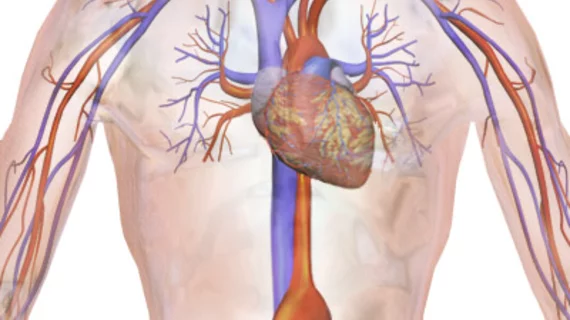Imaging tracer spots deadly AAAs—potentially before life-threatening ruptures occur
A new PET radiotracer can spot deadly abdominal aortic aneurysms (AAAs) and may predict when they will rupture, according to research presented during the Society of Nuclear Medicine and Molecular Imaging annual meeting.
These specific aneurysms occur when blood vessels weaken and create a bulge in the abdominal aorta, a vessel that supplies blood to the abdominal organs and legs. AAAs, however, are often asymptomatic until they burst.
Spotting this vascular disease earlier could go a long way toward improving mortality rates, Gyu Seong Heo, PhD, a post-doctoral researcher at Washington University School of Medicine in St. Louis, explained.
“Right now, clinical diagnosis of AAA relies on anatomic measurements of AAA diameter, which is a poor marker for the prediction of rupture,” Heo added. “Thus, there is an unmet clinical need for a novel molecular biomarker to determine the underlying processes that lead to aneurysm expansion and rupture and to serve as a therapeutic target for better management of AAA patients.”
With this in mind, the researchers looked for a potential biomarker, landing on the chemokine receptor type 2 (CCR2). They then developed a new PET tracer—64Cu-DOTA-ECL1i—to image this particular receptor.
It’s the first of its kind, the researchers noted, and was confirmed to be safe and effective for imaging CCR2 in AAA patients.
Additionally, Heo and co-authors used the novel radiopharmaceutical to assess CCR2-targeted treatment in animals with AAA ruptures. For these preclinical tests, the PET tracer proved “highly suggestive” of predicting whether an aneurysm would burst.
The group also showed, in another animal cohort, that CCR2 inhibitor therapy effectively prevented AAA ruptures. This technique is likely applicable to humans, according to Heo et al.
“Given the availability of CCR2 inhibitors for human uses, our work holds great potential to assess AAA vulnerability, screen AAA patients for CCR2-targeted treatment, and determine treatment response for optimal outcome,” the WashUMed doctor explained.

